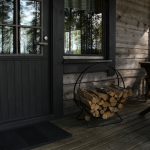In these uncertain times, the thought of creating a secure and well-equipped emergency shelter within your home may have crossed your mind. As the world deals with the increasing frequency of natural disasters, power outages, and other crisis situations, an emergency shelter can provide a safe haven for you and your loved ones. But what are the key considerations when it comes to building such a facility within a UK suburban home? Today, we’ll delve deep into this topic, discussing the various aspects you need to think about to create a sanctuary that’s safe, functional, and compliant with UK regulations.
Choosing the right location
When planning your emergency shelter, the first thing to consider is location. It would be best to choose a place that provides optimal safety and security. Ideally, this would be in a basement or a similar underground area, as this can offer the best protection from potential hazards such as radiation or falling debris.
Lire également : How can you incorporate an indoor herb garden into a UK flat with limited space?
However, not all UK suburban homes have basements. In such cases, you could consider converting an existing room into a shelter. The room you choose should ideally be at the centre of the house, away from windows that could shatter and cause injury.
You also need to ensure that the shelter location is easily accessible. In an emergency scenario, you need to be able to get everyone inside quickly and safely. Therefore, consider the mobility of all household members, including young children, the elderly, and those with disabilities.
Cela peut vous intéresser : What is the most energy-efficient window type for a UK new-build in a cold climate?
Ensuring structural integrity
Structural integrity is a critical aspect of a safe emergency shelter. This means that your shelter should be built to withstand severe conditions, such as natural disasters or nuclear fallout.
The structural design should prioritize stability. A reinforced concrete structure can provide a high degree of protection against various hazards. Additionally, the walls and ceiling should be thick enough to protect against potential radiation exposure.
You should also consider hiring a structural engineer or a professional construction company to ensure the shelter is built to standard. While doing it yourself may save some money, the safety of your family is paramount, and a professional can give you peace of mind knowing the job was done correctly.
Planning for basic needs
An emergency shelter is more than just a safe space; it should also be equipped to meet your family’s basic needs for an extended period. This includes food, water, sanitation, and medical supplies.
When it comes to food and water, consider storing long-life items such as canned goods and bottled water. Aim to have enough supplies to last each person in your household a minimum of two weeks.
To manage sanitation needs, consider portable toilets and ample supplies of toilet paper, as well as items for personal hygiene.
Medical supplies are also key. A well-stocked first aid kit is a must, along with any necessary prescription medications for family members.
Procuring the right equipment
Your emergency shelter should be equipped with essential items to sustain life and ensure comfort, as far as possible, during a crisis.
Lighting is a crucial aspect, as it’s unlikely that you’ll have access to regular electricity supply during an emergency. Battery-powered or hand-crank lanterns can provide ample light without the need for electricity.
Communication equipment such as a battery-powered or wind-up radio is also essential to keep updated with news and important updates.
Additionally, consider including items for warmth and comfort, such as blankets and pillows. Remember, this space is not just about survival but also about keeping morale high during a difficult time.
Complying with UK regulations
While creating your emergency shelter, it’s essential to ensure that your project complies with UK building regulations. This may involve acquiring planning permission if your shelter involves significant structural work.
You should also follow the UK’s building regulations for habitable spaces, which include ensuring sufficient ventilation and safety measures.
Remember to check with your local authority or a construction professional to ensure that your emergency shelter project meets all necessary legal requirements. This step is vital not only for legal compliance but also for the safety and wellbeing of your family.
In summary, building an emergency shelter within a UK suburban home involves careful consideration of various factors, including the location, structural integrity, basic needs, equipment, and regulatory compliance. By addressing these points, you can create a safe, functional, and legally compliant emergency shelter that offers peace of mind in times of crisis.
Considering long-term functionality
Long-term functionality is another critical aspect to consider when building an emergency shelter in your home. The shelter should not only provide immediate protection but also be designed to accommodate longer stays if necessary.
One of the primary considerations for long-term functionality is air supply. In the event of a nuclear fallout or similar disaster scenario, the outside air may become contaminated, making it unsafe to breathe. It’s important to include an air filtration system that can remove harmful particles and provide fresh air within the shelter.
In addition to an air filtration system, your shelter should also include a system for waste disposal. This could include a composting toilet, waste bags, or even an incineration system. Having a plan for waste disposal is essential to prevent the spread of disease and ensure cleanliness over an extended period.
Power supply is another important aspect of long-term functionality. You may need to power essential devices such as communication equipment, lighting, and air filtration systems. Solar panels, hand-crank generators, or even a small nuclear power source could be considered.
Comfort is also a significant factor for long-term stays. Include items that can make the shelter feel more like home, such as personal belongings, books, games, and other sources of entertainment. This will not only make the space more livable but also help to maintain morale during a long-term crisis.
The Importance of Preparedness
In conclusion, the decision to build an emergency shelter within a UK suburban home is not one to be taken lightly. There are numerous considerations to keep in mind, from selecting a suitable location to ensuring structural integrity, planning for basic needs, procuring the right equipment, and ensuring long-term functionality.
Preparedness is the key here. It’s not just about having a safe space to retreat to in an emergency but about being ready to survive and sustain life in that space for an extended period of time.
But remember, building an emergency shelter is not about living in fear; rather, it’s about taking control, being prepared, and gaining peace of mind. It’s about knowing that if the worst were to happen, you have taken steps to ensure the safety and wellbeing of your loved ones.
So, as daunting as it may seem, don’t let the task overwhelm you. Start small, take one step at a time, and remember, the goal is not perfection but preparedness. With careful planning and consideration, you can build an emergency shelter that provides security, functionality, and comfort, ensuring you’re ready for whatever the future may bring.
















